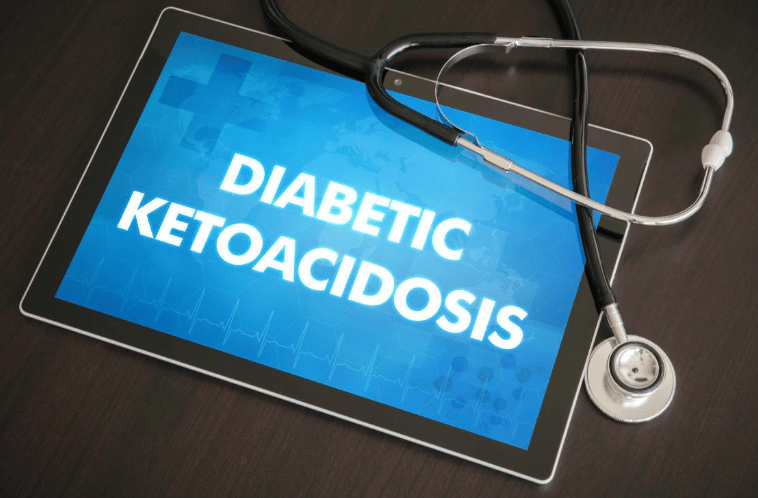What is diabetic ketoacidosis?
Without proper treatment, diabetes can trigger different health complications. One of the most common is diabetic ketoacidosis, a condition in which the body produces high concentrations of acids in the blood called ketones. People who produce 1.5 – 3.0 mmol/L of ketones are likely to develop diabetes compared to individuals who produce less than 0.6 mmol/L.
How does the condition develop? When the body is unable to produce enough insulin, it is unable to break down the sugar in the cells for energy/fuel generation. Instead, the liver starts breaking down the fat into fuel. This process builds up of acids within the bloodstream, known as ketones. The absence of treatment can eventually lead to diabetic ketoacidosis. People with unmanaged diabetes mellitus are at high risk of developing this condition.
Symptoms
Diabetic ketoacidosis symptoms appear quickly when it develops. The symptoms listed below also serve as the first signs of having varying blood glucose levels.
- Frequent urination
- Excessive thirst
- Upset stomach
- Nausea
- Recurrent vomiting
- Fatigue
- Extreme weakness
- Confusion
- Shortness of breath
- Dizziness
Causes
As mentioned, diabetic ketoacidosis occurs when high levels of ketones/acids develop in the bloodstream. Primarily, an impairment in sufficient production and usage of insulin triggers this condition. However, there could be other triggers too.
Infections – Sometimes, infections or illnesses become the triggering factors of diabetic ketoacidosis. When an infection is present, the body creates a high concentration of hormones that affect the functions of insulin. This process can lead to diabetic ketoacidosis.
Missed/ wrong insulin shots – Wrong or inadequate insulin shots impairs insulin production. This triggers diabetic ketoacidosis.
Other triggers of diabetic ketoacidosis are:
- Pancreatitis
- Heart attack
- Drug abuse
- Pneumonia
- Starvation
- Physical or emotional trauma
How is diabetic ketoacidosis diagnosed?
A series of blood tests will confirm the presence of diabetic ketoacidosis in the body. These tests will measure blood sugar levels, ketone levels, and blood acidity. However, other procedures are also effective in identifying underlying health issues that trigger diabetic ketoacidosis. There are as follows:
- Chest X-ray
- Urinalysis
- Blood electrolyte test
- Electrocardiogram
Treatment and prevention
Treatment for diabetic ketoacidosis involves three different procedures:
- Insulin therapy – Since lack of insulin supply triggers diabetic ketoacidosis, a few insulin shots help reverse the illness.
- Electrolyte replacement – The low production of insulin also reduces the production of electrolytes. This can lead to diabetic ketoacidosis. To reverse the condition, your healthcare professional will inject some electrolytes into your body through a vein.
- Replacement of fluid – Diabetic ketoacidosis leads to frequent urination and dehydration. To resolve this condition, doctors recommend taking enough fluid through to fill the gap.
Preventing the development of diabetic ketoacidosis is similar to managing diabetes mellitus. Follow the routine below to avoid diabetic ketoacidosis:
- Manage diabetes well by eating healthily and having regular exercise.
- Monitor your blood sugar levels regularly.
- Adjust your insulin dosage as prescribed and advised by your healthcare professional.
- Test your urine to determine your ketone levels.
Stay hydrated naturally


